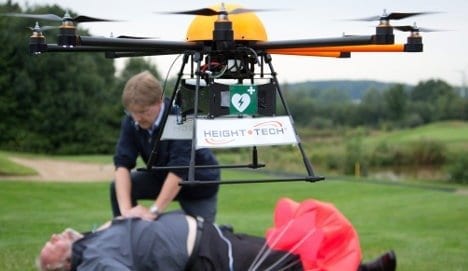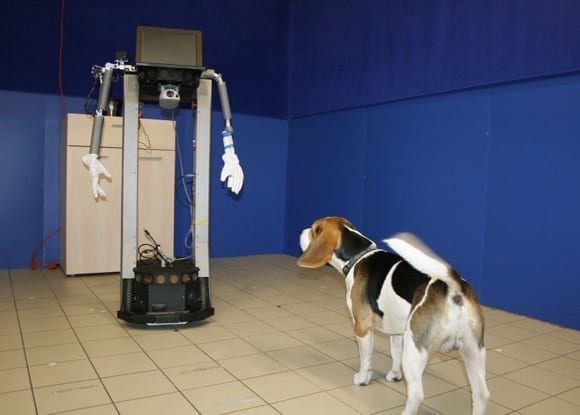
Researchers from U.S. and Canadian institutions are teaming up for a coordinated launch of up to 14 autonomous ocean-monitoring gliders.
The gliders will collect a unique and extensive set of oceanographic and animal-tracking data along the North American Eastern Seaboard. The mission represents the largest international use of coordinated autonomous sampling vehicles attempted to date.
Launched between Georgia and Nova Scotia, the gliders will travel east to the continental shelf break and back during the month- to two-month-long mission. The multi-institution survey will serve as proof of concept of large-scale marine coordination to monitor the oceanographic conditions that directly influence animal migrations and storm events.
Rutgers University leads the mission to which the Dalhousie-based Ocean Tracking Network (OTN) is contributing two Slocum gliders to be launched from Yarmouth and Halifax, respectively. Members of the U.S. Integrated Ocean Observing System (IOOS) are also participating.
Slocum gliders—named for the first sailor to travel solo around the world, Nova Scotian Joshua Slocum—move by altering their density to ascend or descend in the water column. Wings on the glider convert vertical displacement into forward motion resulting in a saw-tooth dive pattern down to 500 metres below the surface. A series of sampling instruments collects, stores and transmits data back to researchers via satellite in near real-time.
Eight of the 14 gliders are equipped with Vemco mobile transceivers—tracking devices that record the presence of acoustically tagged marine animals. The timing of the coordinated glider mission coincides with migration periods for many species and serves to inform poorly understood migration patterns of species like blue sharks. Of special interest to OTN investigators are insights into the unanticipated absence of right whales off the southern tip of Nova Scotia in 2013.
The mission will also collect important data on the shelf’s thermal structure for forecasting major storm events. September to October is the peak differential period between air and sea temperatures—the phenomenon that powers hurricanes.
The Latest Bing News on:
Ocean-Sampling Robot Gliders
- CSIRO retrieve barnacle covered gliders from Southern Ocean uncovering something never seen beforeon April 20, 2024 at 5:00 am
Two barnacle covered gliders have uncovered a part of the Southern Ocean never seen by scientists before. Details >> The technology battled the world’s strongest current while investigating ...
- CSIRO retrieve barnacle covered gliders from Southern Ocean uncovering something never seen beforeon April 20, 2024 at 5:00 am
The gliders were deployed last November, with scientists using the technology in combination with groundbreaking satellite technology, Surface Water and Ocean Topography (SWOT), to investigate ...
- Antarctica's sea ice hit another low this year—understanding how ocean warming is driving the loss is keyon April 8, 2024 at 5:00 pm
We retrieved these robot gliders after several weeks, bringing back unique maps of changing ocean temperature and salinity. The data provide evidence of warmer water lying just beneath the edge of ...
- Antarctica’s sea ice hit another low this year – understanding how ocean warming is driving the loss is keyon April 8, 2024 at 1:11 pm
We retrieved these robot gliders after several weeks, bringing back unique maps of changing ocean temperature and salinity. The data provide evidence of warmer water lying just beneath the edge of ...
- Odd Robot release “Lost Inside Yr Ocean” videoon July 7, 2023 at 4:01 am
California-based Odd Robot have released a video for their new song “Lost Inside Yr Ocean”. The song is off their upcoming album Deathmates which will be out this Fall via Wiretap Records. Odd Robot ...
The Latest Google Headlines on:
Ocean-Sampling Robot Gliders
[google_news title=”” keyword=”Ocean-Sampling Robot Gliders” num_posts=”10″ blurb_length=”0″ show_thumb=”left”]
The Latest Bing News on:
Autonomous ocean-monitoring gliders
- DARPA's autonomous 'Manta Ray' drone can glide through ocean depths undetectedon May 1, 2024 at 4:00 am
Northrop Grumman Corporation has built its Manta Ray uncrewed underwater vehicle, which will operate long-duration missions and carry payloads into the ocean depths in partnership with DARPA.
- Abu Dhabi could soon see flying taxis, self-driving cars and futuristic sea gliders as it embraces futuristic transporton April 28, 2024 at 5:00 pm
Abu Dhabi’s inaugural DRIFTx concluded with the consensus that flying taxis, autonomous cars, and sea gliders will be a popular mode of ... which provided an aerobatic drone for human flight, Ocean ...
- Nature-Inspired Submarine Glider: Manta Ray to Revolutionize Ocean Missionson April 24, 2024 at 1:04 pm
this technical marvel's autonomous, prolonged operations will transform submarine missions. Northrop Grumman's Manta Ray UUV combines human creativity with nature. Inspired by the manta ray's elegant ...
- New stealthy submarine glider set for autonomous undersea missionson April 24, 2024 at 3:00 am
Northrop Grumman's Manta Ray uncrewed underwater vehicle aims to revolutionize undersea missions — it glides through the ocean without human assistance.
- New stealthy submarine glider set for autonomous undersea missionson April 24, 2024 at 3:00 am
The ocean depths are a new frontier explored by humans and autonomous vehicles ... this extra-large glider vehicle promises to soar through the ocean on long-range missions without human assistance.
- CSIRO retrieve barnacle covered gliders from Southern Ocean uncovering something never seen beforeon April 20, 2024 at 5:00 am
Two barnacle covered gliders have uncovered a part of the Southern Ocean never seen by scientists before. Details >> The technology battled the world’s strongest current while investigating ...
- CSIRO retrieve barnacle covered gliders from Southern Ocean uncovering something never seen beforeon April 20, 2024 at 5:00 am
The gliders were deployed last November, with scientists using the technology in combination with groundbreaking satellite technology, Surface Water and Ocean Topography (SWOT), to investigate ...
The Latest Google Headlines on:
Autonomous ocean-monitoring gliders
[google_news title=”” keyword=”autonomous ocean-monitoring gliders” num_posts=”10″ blurb_length=”0″ show_thumb=”left”]










